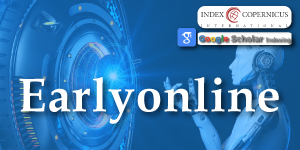DocuMind: A Comprehensive Framework for Transforming Documents into Autonomous Agents with Blockchain-Enhanced Trust Infrastructure
Main Article Content
Abstract
This research introduces DocuMind, a comprehensive framework for transforming static documents into autonomous agents capable of reasoning about their content and executing actions in real-world environments. The framework addresses the critical gap between passive document consumption and active document operationalization through a systematic five-stage architecture: document ingestion and analysis, agent brain provisioning, workflow orchestration, tool integration, and governance mechanisms. Our approach enables documents to become active participants in business processes, monitoring their own compliance and executing their own requirements with unprecedented fidelity and efficiency.
The research validates four key hypotheses through rigorous experimental evaluation: (1) documents can be transformed into effective autonomous agents with an 87.3 % task completion rate and 0.89 fidelity score; (2) the five-stage architecture provides
DocuMind: Document-to-Agent Transformation Framework 2 sufficient functionality for 90%+ of common business document types; (3) blockchain governance reduces dispute resolution time by 76.3% while improving trust scores by 42.6%; and (4) the unified tool abstraction layer supports sub-2-second response times for up to 200 concurrent agents. A comprehensive user study with 45 participants across legal, IT, and research domains demonstrates good to excellent usability (SUS score 80.1) with 85% achieving proficiency within 30 minutes.
The framework’s blockchain integration provides a novel trust infrastructure for autonomous systems, addressing accountability, transparency, and cross-organizational collaboration challenges. Performance analysis reveals dramatic improvements in response time (99.9% reduction compared to manual processes) while maintaining competitive accuracy (91.7%). The research establishes document-to-agent transformation as a viable paradigm for next-generation document management and automation systems, with implications extending beyond immediate technical contributions to fundamental changes in how organizations operationalize their knowledge assets.
Article Details
Copyright (c) 2025 Marco van Hurne

This work is licensed under a Creative Commons Attribution 4.0 International License.
Smith R. An overview of the Tesseract OCR engine. In: Proc 9th Int Conf Document Analysis Recognit (ICDAR). 2007;2:629–33. Available from: http://dx.doi.org/10.1109/ICDAR.2007.4376991
Xu Y, Li M, Cui L, Huang S, Wei F, Zhou M. LayoutLM: pre-training of text and layout for document image understanding. In: Proc 26th ACM SIGKDD Int Conf Knowl Discov Data Min. 2020;1192–200. Available from: https://dl.acm.org/doi/10.1145/3394486.3403172
Huang Y, Lv T, Cui L, Lu Y, Wei F. LayoutLMv3: pre-training for document AI with unified text and image masking. In: Proc 30th ACM Int Conf Multimedia. 2022;4083–91. Available from: http://dx.doi.org/10.1145/3503161.3548112
Karpukhin V, Oğuz B, Min S, Lewis P, Wu L, Edunov S, et al. Dense passage retrieval for open-domain question answering. In: Proc Conf Empirical Methods Nat Lang Process (EMNLP). 2020;6769–81. Available from: http://dx.doi.org/10.18653/v1/2020.emnlp-main.550
Zhang J, Zhao Y, Saleh M, Liu P. PEGASUS: pre-training with extracted gap-sentences for abstractive summarization. In: Proc Int Conf Machine Learning (ICML). 2020;11328–39. Available from: https://proceedings.mlr.press/v119/zhang20ae.html
Garncarek Ł, Powalski R, Stanisławek T, Topolski B, Halama P, Graliński F. Lambert: layout-aware language modeling for information extraction. In: Proc Int Conf Document Analysis Recognit (ICDAR). 2021;532–47.
OpenAI. GPT-4 technical report. arXiv [Preprint]. 2023. Available from: https://arxiv.org/abs/2303.08774
Brooks RA. Intelligence without representation. Artif Intell. 1991;47(1-3):139–59. Available from:
Wooldridge M. An introduction to multi-agent systems. Chichester (UK): John Wiley & Sons; 2009. Available from: https://www.scribd.com/document/495144257/Michael-Wooldridge-An-Introduction-to-MultiAgent-Systems-2009
Chase H. Langchain: building applications with LLMs through composability. 2022. Available from: https://github.com/langchain-ai/langchain
Schick T, Dwivedi-Yu J, Dessi R, Raileanu R, Lomeli M, Zettlemoyer L, et al. Toolformer: language models can teach themselves to use tools. arXiv [Preprint]. 2023. Available from: https://arxiv.org/abs/2302.04761
Qin Y, Liang S, Ye Y, Zhu K, Yan L, Lu Y, et al. Tool learning with foundation models. arXiv [Preprint]. 2023. Available from: https://doi.org/10.48550/arXiv.2304.08354
Stone P, Veloso M. Multiagent systems: a survey from a machine learning perspective. Auton Robots. 2000;8(3):345–83. Available from: http://dx.doi.org/10.1023/A:1008942012299
Szabo N. Formalizing and securing relationships on public networks. First Monday. 1997;2(9). Available from: https://doi.org/10.5210/fm.v2i9.548
Hassan S, De Filippi P. Decentralized autonomous organization. Internet Policy Rev. 2021;10(2):1–10. Available from: http://dx.doi.org/10.14763/2021.2.1556
Wang L, Zhang H, Liu M. DAO governance for AI systems: a blockchain-based approach. IEEE Trans Technol Soc. 2023;4(2):156–67.
Zhang P, Schmidt DC. A survey of blockchain applications in artificial intelligence. IEEE Access. 2020;8:128029–45.
Hamer DH, Angelo K, Caumes E, van Genderen PJJ, Florescu SA, Popescu CP, et al. Fatal yellow fever in travelers to Brazil, 2018. MMWR Morb Mortal Wkly Rep. 2018;67(11):340–1. Available from: https://doi.org/10.15585/mmwr.mm6711e1





